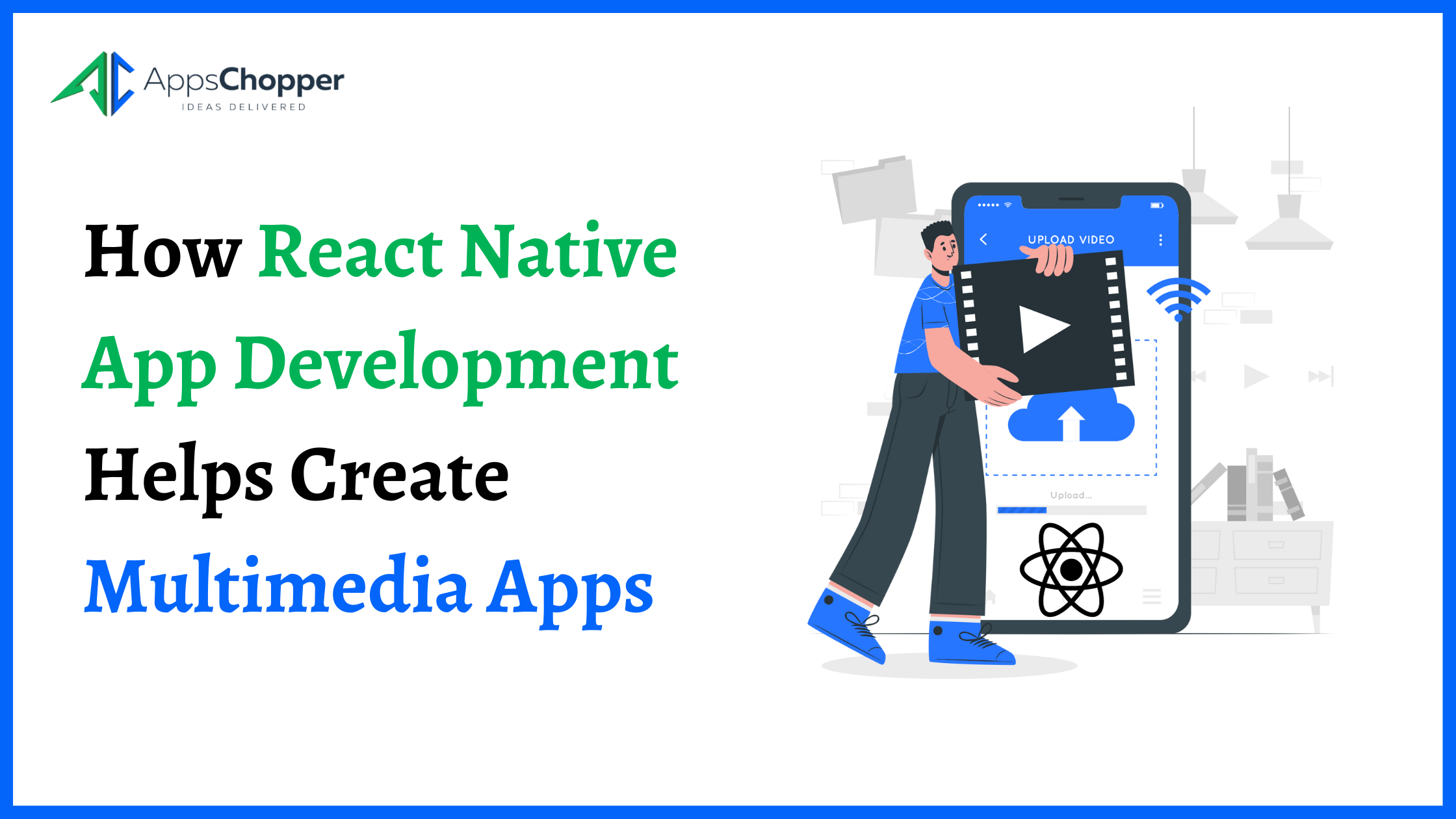React Native is like a magic wand for developers. It is a tool that turns simple code into mesmerizing apps. For instance, if you have experienced how seamless Facebook ads or Facebook events are on mobile, you have seen React Native in action.
It offers the performance of a native app but the flexibility and ease of web applications. The beauty of this framework lies in its simplicity: use JavaScript, and get a mobile app.
No more grappling with different languages for different platforms; React Native speaks universally. We are about to find out how this framework enables every React Native app development company to build world-class multimedia apps for its clients.
How React Native Amplifies Experience for Multimedia App Development
Many startups to tech giants are using this framework to build their multimedia apps for three major reasons:
Graphics and Animation
React Native is more than text and buttons. It is a canvas where developers paint vibrant graphics and smooth animations. Be it an interactive game or a media-rich educational app, React Native ensures visuals are sharp and animations buttery smooth.
Sound and Video
React Native easily handles multimedia elements, providing an uninterrupted sound and video experience. This makes it easy to assume that if you remember the last time an app’s audio captivated you or when a video played without a hitch, it was likely made using this framework.
Interactivity
Tapping, swiping, zooming – users love engaging with apps. React Native’s responsiveness elevates interactivity, making multimedia apps truly immersive.
Other Benefits of React Native for Multimedia App Development
Here are more reasons why many businesses are opting for React Native in their multimedia app projects, hiring React Native app development services wherever needed:
Cross-platform capabilities
One codebase running on multiple platforms is basically a developer’s dream come true.
For example, if you’re developing a music app, React Native ensures iPhone and Android users can use it. This eliminates the notorious “platform dilemma” many developers face. In other words, you can say goodbye to rewriting code or sacrificing features for one platform.
Simply put, it’s like baking a pie and getting to enjoy it in different flavors.
Rich User Interface (UI)
React Native supports the integration of native modules, allowing developers to utilize native code when required. This is particularly beneficial for multimedia apps which often need device-specific functionalities. As a result, developers can build apps with a smooth UI, which is essential for media playback and interactive multimedia features.
High Performance
When it comes to multimedia apps, performance is key. Users expect videos to play without lag, images to load swiftly, and audio to stream flawlessly. React Native, with its ability to leverage native components, ensures optimal performance. Its use of JavaScript ensures rapid development while still maintaining app speed.
Flexibility with Third-Party Plugins
The flexibility to incorporate third-party plugins in React Native means developers can enhance multimedia app functionalities without building everything from scratch. Whether it’s integrating a video player, utilizing an audio processing library, or incorporating augmented reality features, React Native’s ecosystem has a plugin for everything.
Excellent User Experience
Many users are bound to confuse a well-made React Native app with a native one. This is due to the framework’s ability to ensure smooth animations, swift transitions, and overall outstanding performance.
Hot Reloading Feature
React Native’s hot-reloading feature is a boon for multimedia app developers. It allows them to instantly view the results of the latest change, ensuring rapid iterations and faster development. This leads to quicker app launches and timely updates for users.
Cost-Efficient Development
Building separate apps for iOS and Android costs more because of double effort and resource requirements. React Native slashes this cost by using a single codebase for both platforms. This cost-saving in development is invaluable for multimedia apps, which often require significant investment in content production.
Community Support
React Native boasts a vast community of developers and contributors. This community continuously works to improve the framework, offering solutions and updates. For multimedia app developers, this means access to a plethora of resources, tutorials, and third-party tools tailored to their needs.
Real-world Examples of Immersive Multimedia Apps
Let us look at popular success stories that vouch for React Native’s capabilities:
- Instagram: Integration of React Native-led to faster app speeds and enhanced features.
- Airbnb: Although they later shifted away, their journey with React Native saw improved development times and user experience.
- SoundCloud Pulse: An app where creators can manage their accounts, made seamless with React Native.
- Walmart: Walmart improved performance while saving on resources by adopting this framework.
Conclusion
It is evident from the above examples that big names trust React Native to deliver unparalleled multimedia experiences.
React Native is one of the go-to cross-platform technologies for cost-effective solutions. Its enhanced user experience capabilities have also made it popular among those looking to create next-gen multimedia apps. Hiring an experienced React Native app development company can help you leverage its ability to integrate native modules when needed.

